When night falls in the quiet villages of Karangasem, the flicker of fire suddenly transforms the darkness into a stage of sacred intensity. This is Ter-Teran, a centuries-old Balinese tradition often described as a “war of flame.” Here, sabut kelapa (coconut husks) set ablaze are hurled across temple courtyards, their sparks illuminating not only the night but also the collective spirit of the community. Keep reading to uncover the history, symbolism, and profound meaning of this blazing tradition!
Often described as a “war of flame", their sparks illuminating not only the night but also the collective spirit of the community.
Origins and Ritual Significance
Ter-Teran is performed in Desa Adat Saren and Desa Jasri, both located in Karangasem, Bali. Its roots trace back to the island’s ancestral past, though no written record confirms its exact beginning. What is clear is that this tradition is deeply tied to Usaba Dalem and Usaba Muu-Muu, great temple festivals held once every two years during odd-numbered years. The ritual coincides with Tilem Kesanga, the dark moon before Nyepi, Bali’s Day of Silence.
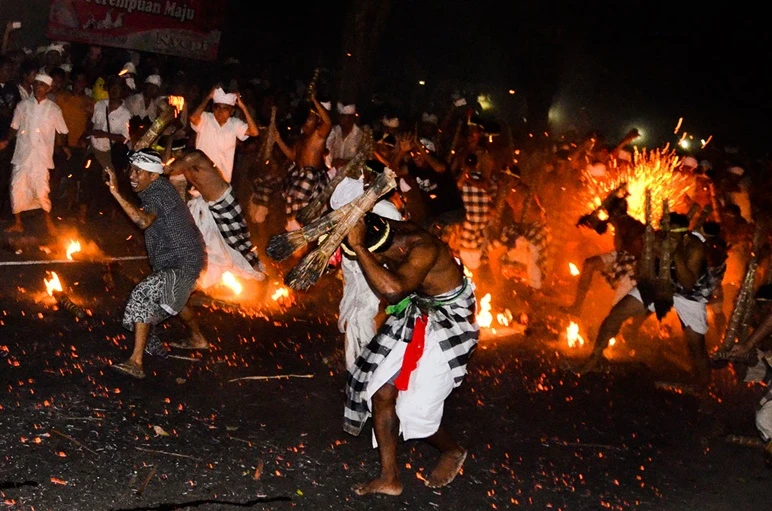
The purpose is strikingly symbolic. Villagers believe that by casting fire upon one another, they are in fact casting away mala, the impurities and negative energies that accumulate in the community. It is also a form of warfare against bhuta kala, malevolent spirits that disturb the harmony of the universe. Through Ter-Teran, both the seen and unseen realms are purified before the solemn piodalan or temple ceremony.
The Mechanics of a War of Fire
On the evening of the ritual, heaps of dried coconut husks are stacked in front of temples such as Pura Sangsegan and Pura Jati. Once blessed, they become weapons of fire. Young men split into two groups, each ready to face the other with blazing handfuls of sabut kelapa or sundih, torches crafted from dried palm leaves.
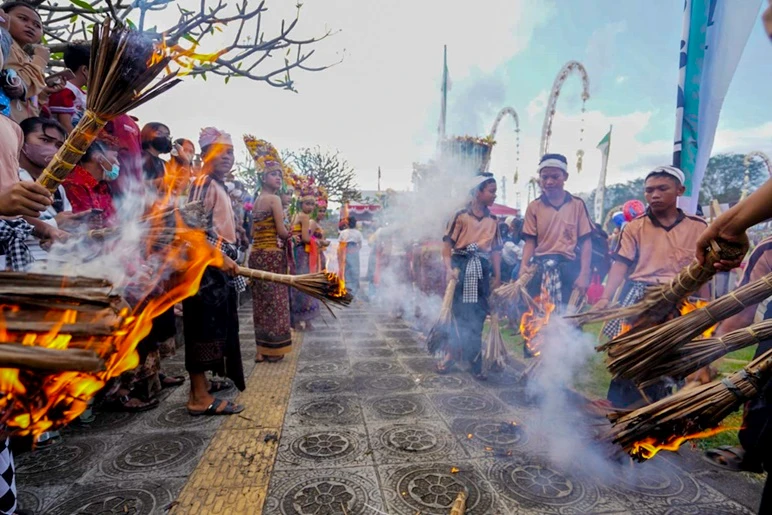
A signal is given by the kulkul, a hollow drum, and the air fills with shouts and the crackle of fire. Sparks fly as husks arc through the night sky, landing with smoldering force. When the call of batur echoes, participants pause, only to rearm and resume moments later. Rules keep the ritual sacred: no lamps are lit, ensuring anonymity so no resentment festers; no green husks are used, only dried ones that burn properly; and no strikes are made from within the circle.
Pain and Pride Intertwined
To outsiders, Ter-Teran may seem perilous, even reckless. Flames singe skin and smoke blurs vision. Yet for participants, the sting of heat is eclipsed by devotion. As one villager remarked, pain becomes secondary when the act is performed with joy and purpose. The community accepts the risks as part of preserving a legacy handed down by their ancestors.
Layers of Symbolism
The architectural setting of Ter-Teran is significant. Temples, with their towering meru shrines and open courtyards, provide both a sacred backdrop and a protective container for the ritual. Fire itself represents transformation, an element that destroys in order to purify. The act of hurling flames back and forth embodies the eternal struggle between light and darkness, chaos and order, humanity and the unseen.
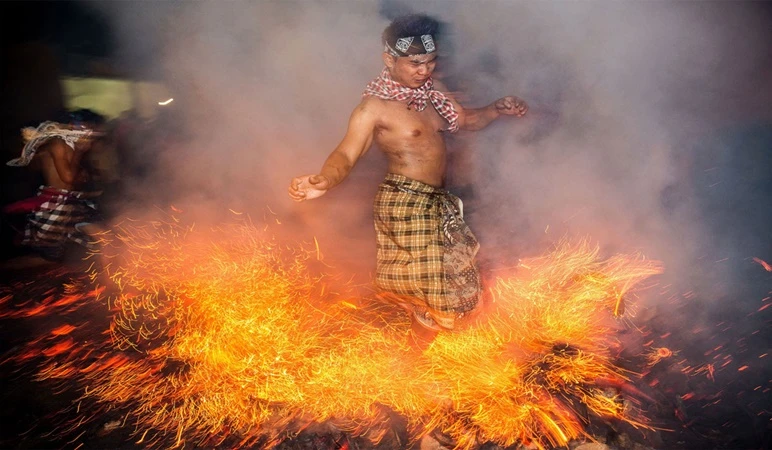
Ter-Teran also mirrors Bali’s dual concepts of bhuana agung (the macrocosm of the universe) and bhuana alit (the microcosm of human life). To restore balance in one is to restore balance in the other. By driving away bhuta kala, villagers secure peace not only in their immediate environment but also in the cosmic order.
Continuity in Modern Times
Despite the modern world’s pressures, Desa Saren and Jasri have remained steadfast in upholding Ter-Teran. Elders enforce awig-awig, the customary rules that govern behavior during the ritual. Violations are unthinkable, as breaking sacred codes is believed to invite misfortune.
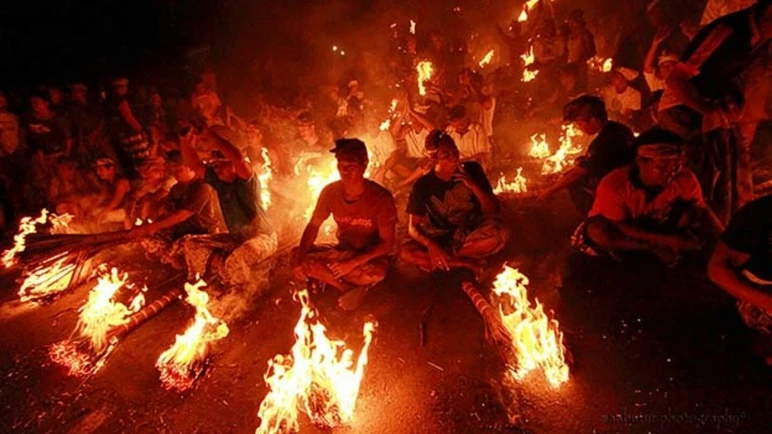
The result is an unbroken chain of tradition that bridges past and present. Children grow up watching their elders, then take their place in the fiery ranks, ensuring the ritual’s survival. What outsiders see as a dramatic fire fight is, in essence, a timeless act of cultural resilience.



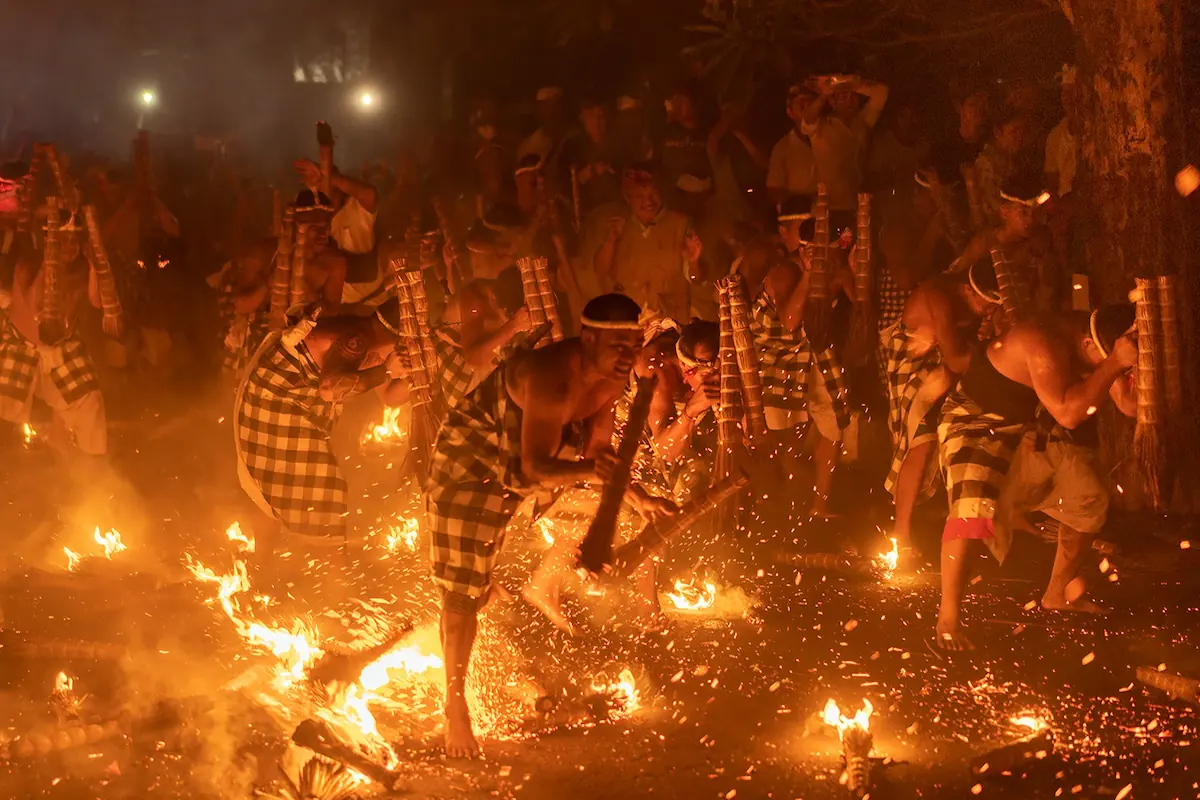
 Billy Bagus
Billy Bagus
 Sep 29, 2025
Sep 29, 2025






